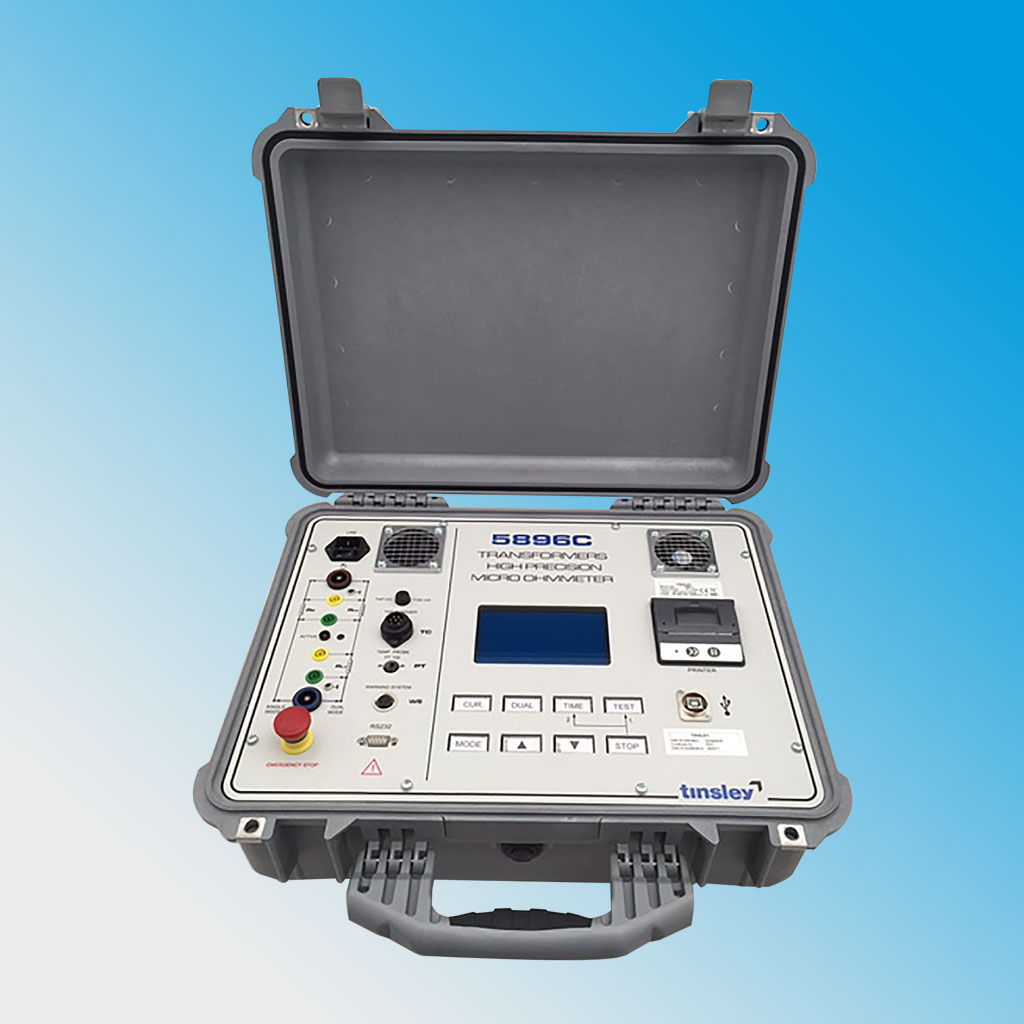- HOME
- WHAT’S NEW
- PRECISION MEASUREMENT
- LCR Bridge 6451-2 with Limits Comparator
- PRESSURE MEASUREMENT
- POWER PLANT
- RESISTANCE MEASUREMENT
- MO-5892-1A Portable Digital Micro-ohmmeter
- MO-5889-200A Portable Digital Micro-ohmmeter
- MO-589R-200A Portable Digital Micro-ohmmeter
- MO-5893-10A Portable Digital Micro-ohmmeter
- MO-5893-10AT Portable Digital Micro-ohmmeter
- MO-5898-100A Portable Digital Micro-ohmmeter
- MO-5898-200A Portable Digital Micro-ohmmeter
- MO-5899-100A Portable Digital Micro-ohmmeter
- Resistance Test Clamp
- Kelvin Test Lead Sets
- Model 5894 Wide Range Precision Ohmmeter
- Model 5896C Dual Channel Transformer Micro-Ohmmeter (RM)
- Model 5898 Portable 200A Precision Micro-Ohmmeter (RM)
- Standard Reference Resistors
- PORTABLE BRIDGES
- DECADE RESISTANCE BOXES
- TRANSFORMER TEST EQUIPMENT
- Portable Transformer Ratiometer Model 4167F
- Portable Transformer Ratiometer Model 4167F-(CVT)
- Portable ‘Q’ (Quality) meter type 5867
- Transformer Micro-Ohmmeter (10 Amp) 5895
- Dual Channel Transformer Micro-Ohmmeter 5896C
- High Current (100 Amp) Portable Micro-Ohmmeter 5897
- High Current (200A) Portable Micro-Ohmmeter 5898
- High Resistance Fault Locator 5762N
- PORTABLE TEST & MEASUREMENT
- SUBMARINE CABLE TEST
- Long Haul Submarine Cable Test Set Model 5903
- Portable Short-Haul Submarine Cable Test Set Model 5910
- Short Haul Submarine Cable Test Set Model 5910R (Rack Mount)
- Electroding Generator Model 5915
- Electroding Detector Model 5916
- Beach Probe & Battery Powered Portable Electroding Detector Models 5917 and 5918
- Cable Termination Unit Type 5941
- Cable Termination Unit Type 5941-3 LAN
- P1000E Earth Probe
- DIGITAL EARTH TESTER
- OBSOLETE PRODUCTS
- HISTORY
- CONTACT
QUESTIONS? CALL: 01376 335271

Tinsley offer a wide range of products ranging from transformer testers to submarine cable equipment
T 01376 335271
Email: info@tinsley.co.uk
Tinsley Instrumentation Ltd
1 Warner Drive, Springwood Industrial Estate, Braintree, Essex CM7 2YW
Model 5896C Dual Channel Transformer Micro-Ohmmeter
The advantage of the 5896C is its simplicity of use
The Tinsley 5896C is specifically designed to measure the resistance of highly inductive loads such as transformers, motors and generators. It has a measurement resolution of 0.01µW for the 20µW range and can measure resistances up to 6kW. Transformers up to 500 MVA and above can be measured. A specially designed current source is used to quickly saturate the device core and obtain a stable resistance reading in the shortest possible time.
So that the highest resolution of the reading is always displayed, range selection is performed automatically and therefore is not necessary to be set by the operator.
When required, a temperature compensation feature allows the reading to be corrected to the 20°C equivalent value by either entering the actual temperature of the unit under test or by using a PT100 temperature probe. A correction can be selected for either copper or aluminium windings.
When used for automatic “Heat Run” tests, measurements are made at preset time intervals and an internal algorithm is used to calculate the resistance at t=0. The transformer is made safe after testing by discharging stored energy into the 5896C attenuation resistor and varistors. Only a negligible residue will remain when the discharge warning light indicates that it is safe to remove the test leads.
The 5896C uses the four-wire measurement technique to eliminate the effect of the resistance of the test leads. By using the dual inputs of the 5896C it is possible to measure both a low voltage and the high voltage winding of a transformer at the same time. This can greatly reduce the time taken to produce cooling curves with an added advantage that the stability of the low voltage winding measurement can be improved when the high voltage winding is energised by the 5896C at the same time.
The 5896C can be used to control the transformer tap changer. Therefore automatic measurement is possible with no need to remove the current between each tap change. During switching the inputs of the instrument are protected to avoid damage that could occur should a tap changer prove to be faulty during testing.
See the table below for a run-down of this product's specifications.
Resistance Range |
20mW (10-60A) to 6kW (10mA) |
||||
Resolution |
0.01mW e.g. 150.01mW (4-1/2 digit) |
||||
Accuracy |
+/- 0.1% of reading |
||||
Max. Voltage |
60V pure DC (Noise < 10mVpp) |
||||
Max. Current |
60A pure DC |
||||
Selectable max. current |
10mA to 60A, limited by total resistance (cable + object) |
||||
Measuring time |
Short due to very fast charge with 60V available |
||||
Discharge time |
Typically 1/10 of charging time |
||||
Measuring inputs |
Measuring inputs 2 Current, 4 Potential (2 channels) |
||||
Temperature input |
Connector for PT100 (correction for 20/23°C for Cu or Al) |
||||
Tap changer |
Connector for automatic up/down control |
||||
Warning system |
Connector for red/green warning lamps |
||||
External start |
Connector for measurement start via external contact |
||||
External current supply |
Connector for controlling currents up to 600 A, automatically
|
||||
Mains |
85 to 260 VAC, 6.5A, Auto ranging |
||||
Display |
LCD 240 x 128 with back light |
||||
Interface |
RS232C |
||||
Printer |
Built-in thermal printer |
||||
Test storage |
Up to 1000 results |
||||
Environment (operating) |
-10°C to 50°C |
||||
Environment (storage) |
-30°C to 60°C |
||||
Environment (humidity) |
0 - 90% R/H max., non condensing |
||||
Size (without cables) |
490 x 400 x 190 mm (WxDxH, mobile ABS rugged case) |
||||
Weight (without cables) |
Approx. 15kg |
||||
Cables |
Various options available |
||||
Safety and EMC |
CE, IEC-1010-1, EN55022 B, EN61000-3-2.-3 , ENV50204 |

